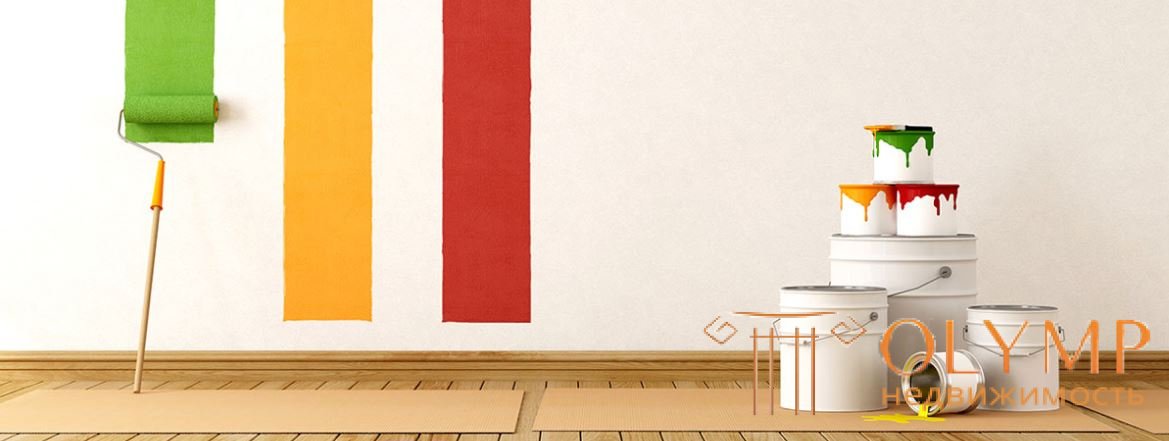
The decoration of the premises is carried out with the use of a large number of different compositions, divided into painting and auxiliary ones.
Painting compositions must have certain properties that enable them to perform the role of finishing, protective and decorative coatings. Such properties include light, atmosphere, alkali and acid resistance, viscosity, coloring ability, the strength of the resulting film in tension, bending, adhesion, etc. The main characteristics of paints that determine their quality: service life, consumption per 1 m2 of surface, appearance, environmental friendliness and ease of application.

Painting compositions are aqueous and non-aqueous. The composition of any edge includes a pigment, a binder, a solvent or diluent, and fillers.
Pigments are dry dyes of organic and mineral origin, insoluble in water and solvents. Pigments can be natural and artificial.
Binders in aqueous solutions - bone glue, casein, starch, lime, cement, liquid glass, in non-aqueous compositions - natural drying oil, drying oil, oxol, synthetic binders and emulsions. The purpose of the binder is the adhesion of pigment particles to each other and the creation of a thin ink film firmly attached to the surface being painted.
Drying oil is a very widely used substance. It is obtained on the basis of vegetable oils (linseed, hemp, sunflower), which have undergone a special treatment - oxidation or prolonged heating at high temperatures. Drying oil as a binder is needed for the preparation of paints, putties, putties, it is impregnated with wood before painting. Drying oil oxol is a solution of oxidized vegetable oil and desiccant in a solvent - gasoline. Due to the oxidation of drying oil, oxol is more active as a binder, dries faster, and hence the coating layer based on it has the same properties, but the resulting coating has a higher brittleness and lower durability.










 Thinners and solvents serve to provide
Thinners and solvents serve to provide
viscosity and color composition and dilution thickened and thickened
paints.
Fillers are added to paint formulations to improve them.
adhesion with the base, increase strength, fire resistance, etc.
For this purpose, ground talc, asbestos, mica, tripoli, kaolin,
sand of various size.
To improve the technological and performance qualities of paints
emulsifiers, water repellents, plasticizers, dryers, antiseptics, etc.
Auxiliary compositions include primers, putties, lubricants, grinding materials.
Primer - painting composition containing pigment and binder. These are more liquid painting compositions that serve to reduce the porosity of the painted surfaces and improve their adhesive abilities. Waterborne primers include vitriol, alum and silicate compounds. Oil primers - linseed oil, oil color diluted with linseed oil, oil-emulsion composition, etc .; synthetically and compounds - perchlorovinyl, polyvinyl acetate, styrene-butadiene, which is prepared by diluting the corresponding paints with water. Putties and grease pastes are prepared on the same binders as paint formulations, but with a large amount of filler, with the result that they have a pasty consistency. The purpose of the fillers is the leveling of primed surfaces, lubricating pastes - sealing of certain small irregularities, cracks, and surface damage.


Что бы оставить комментарий войдите
Комментарии (0)